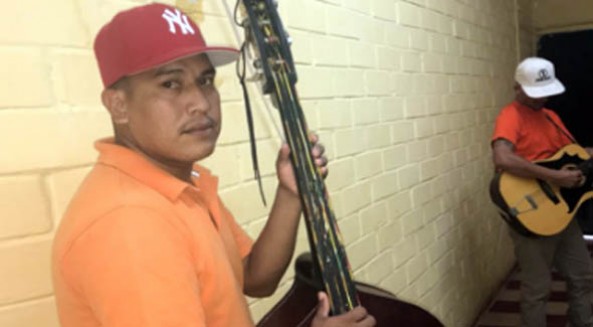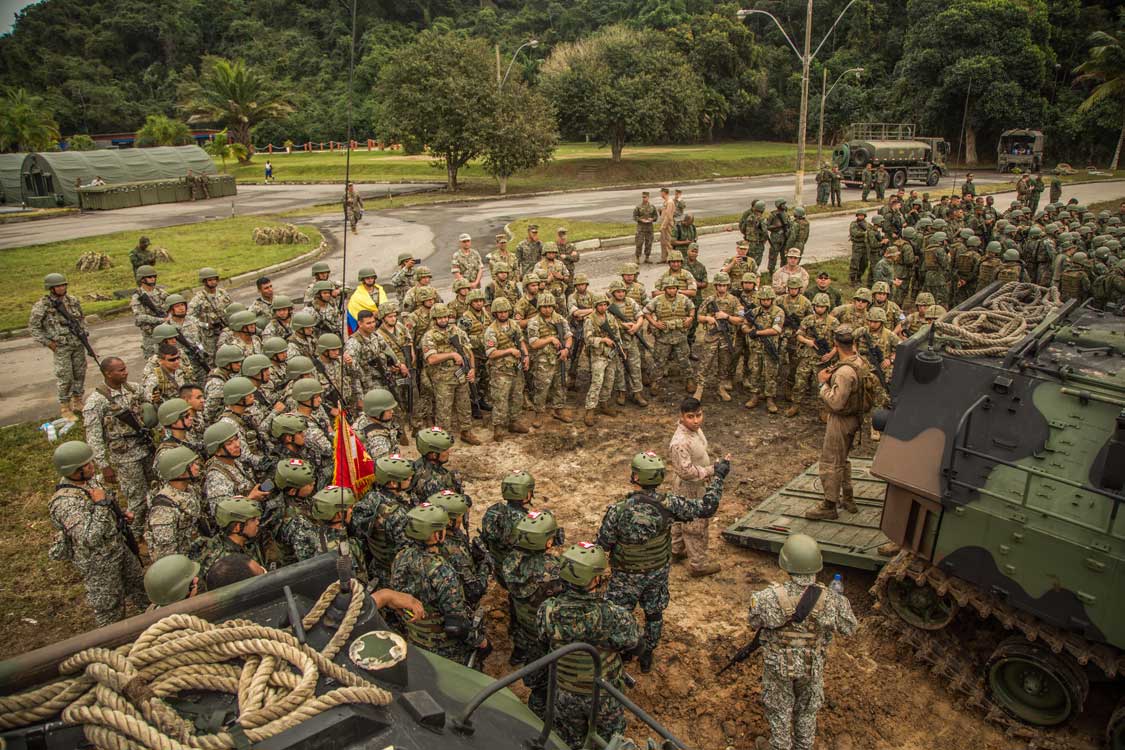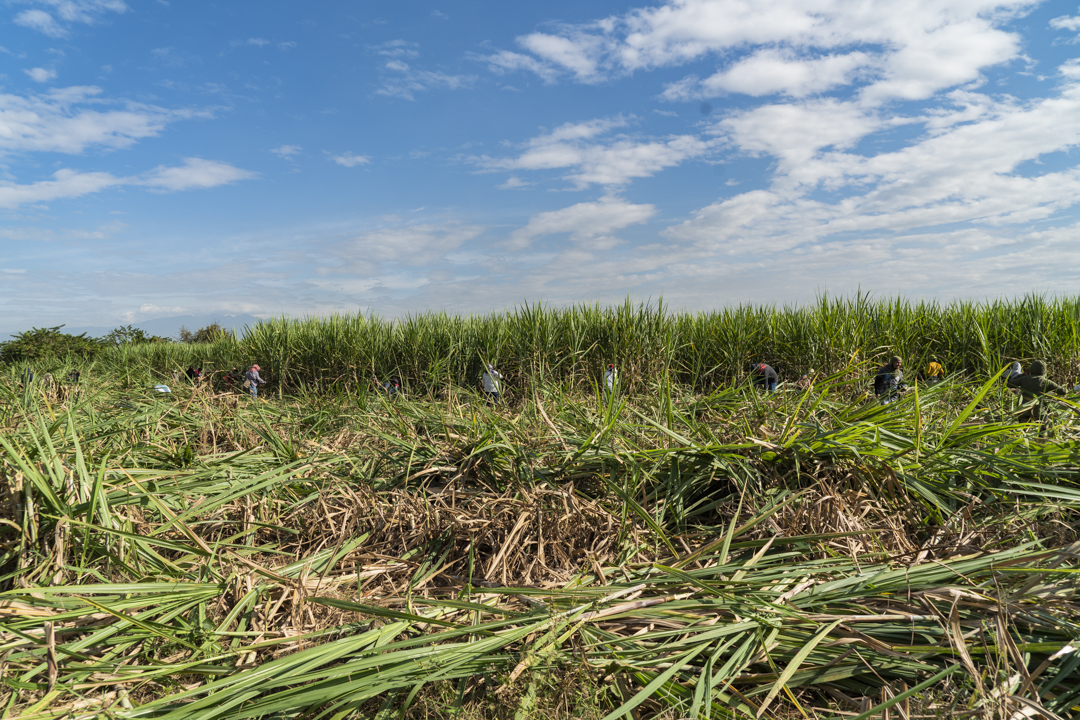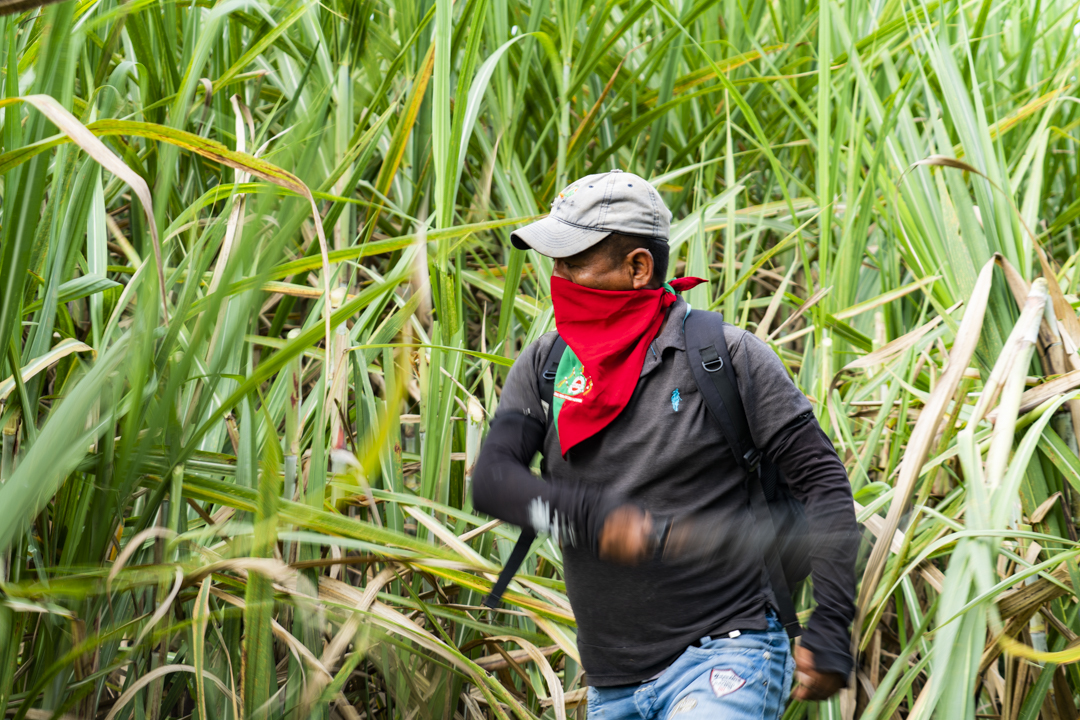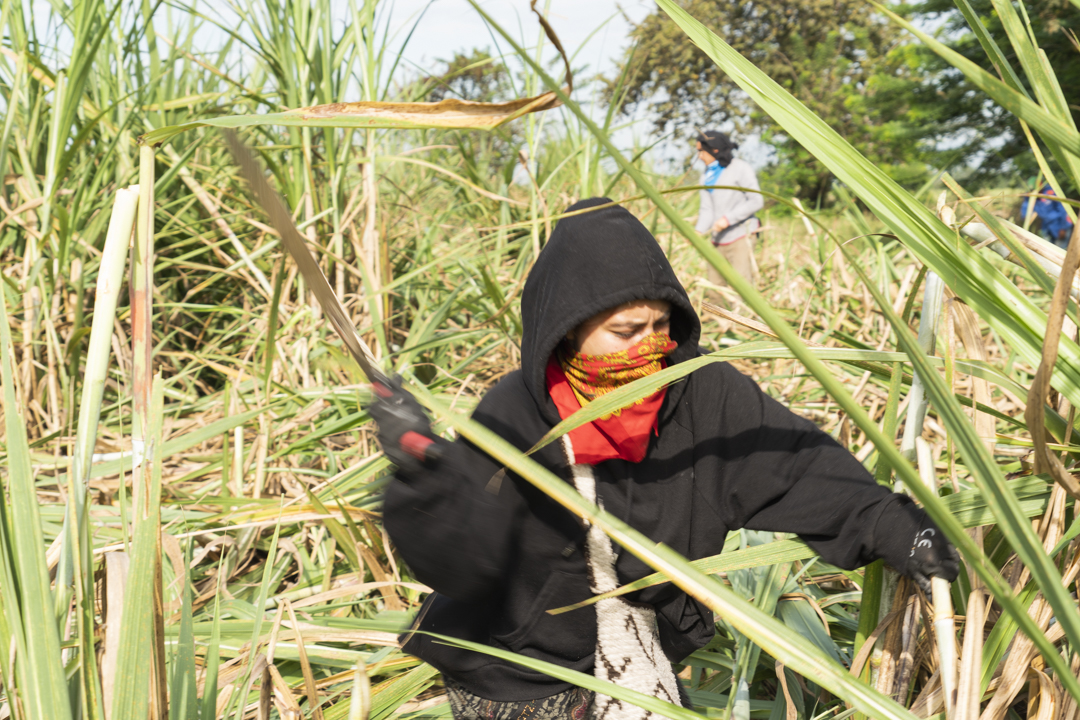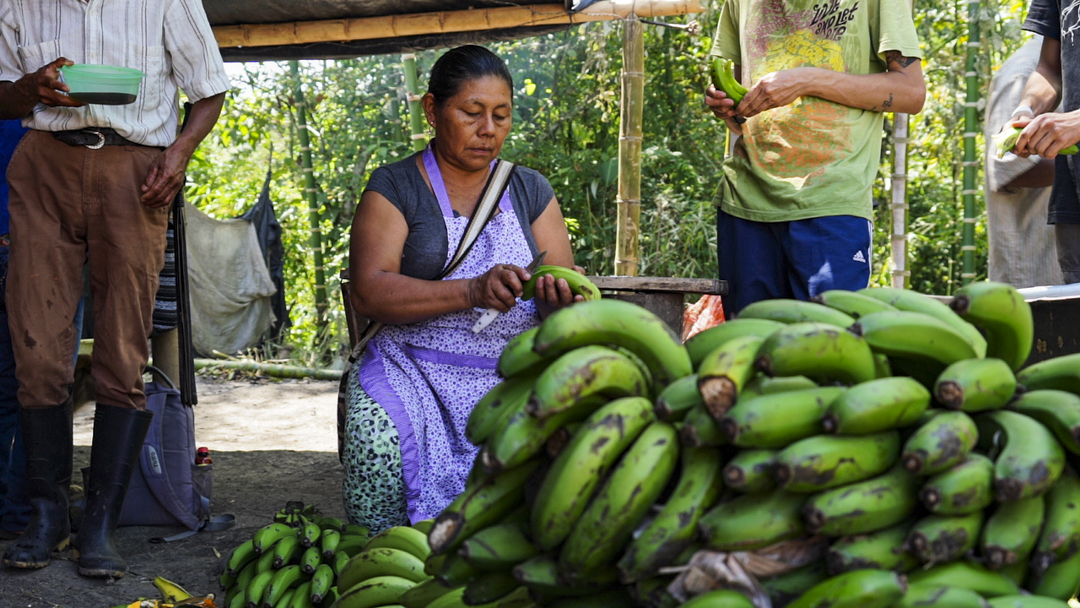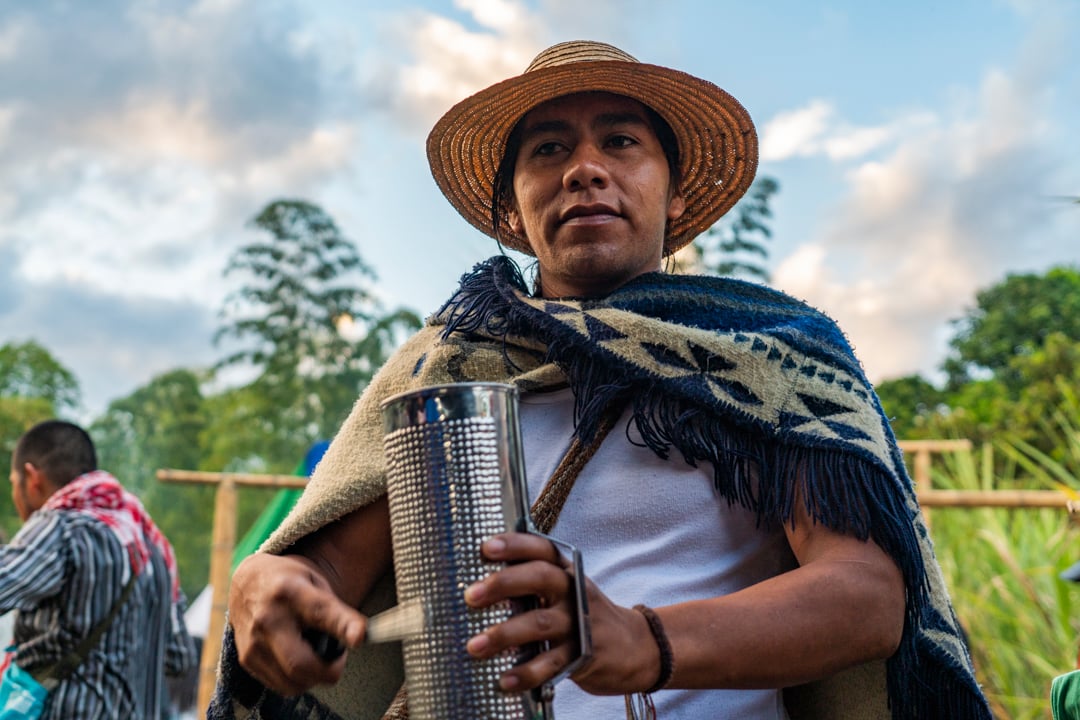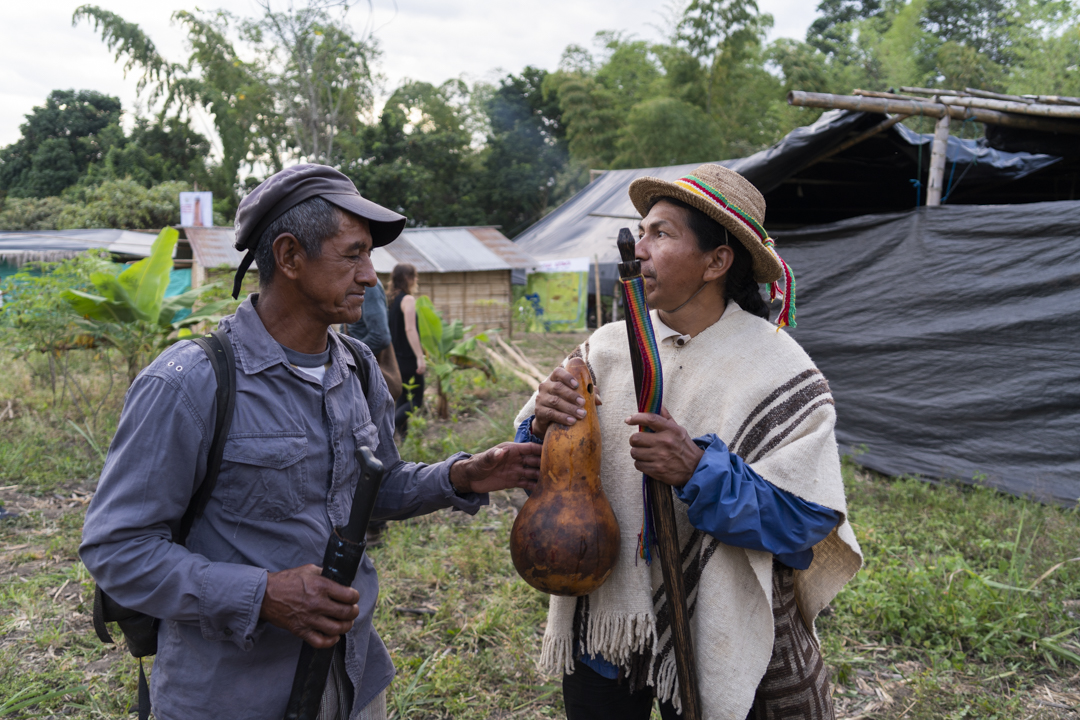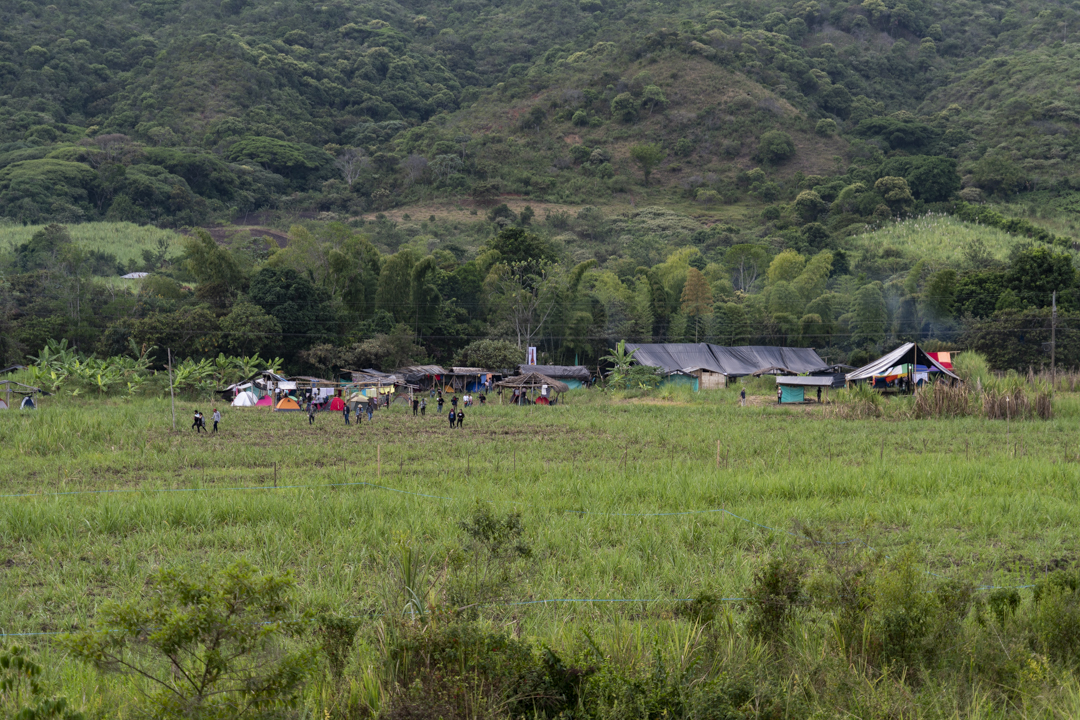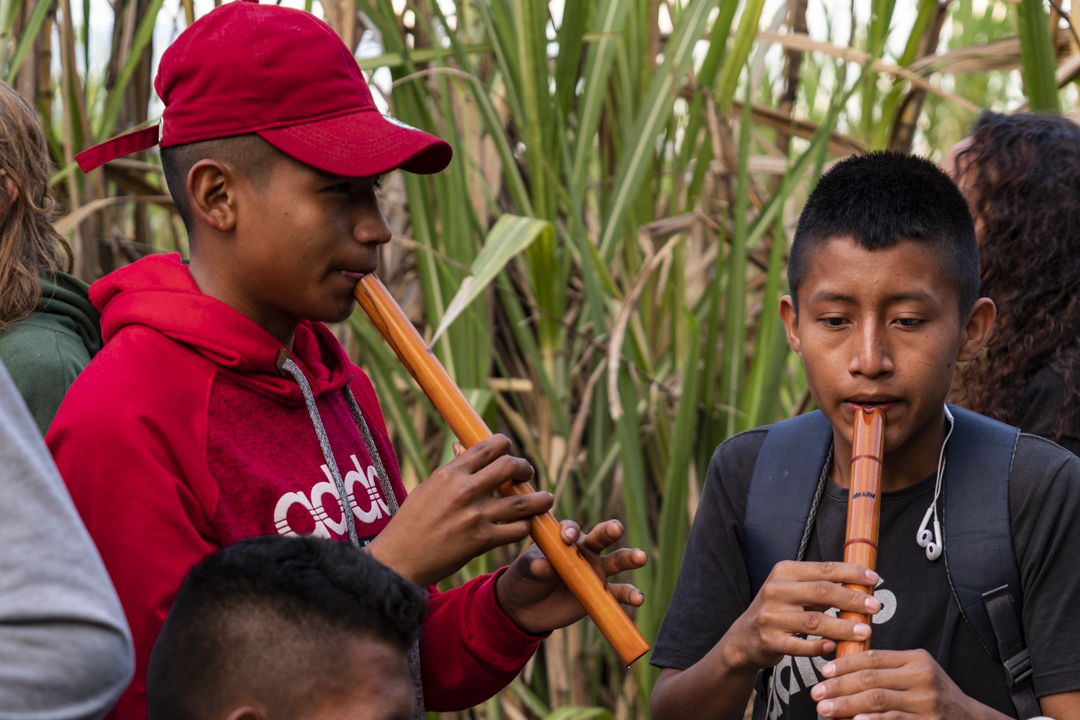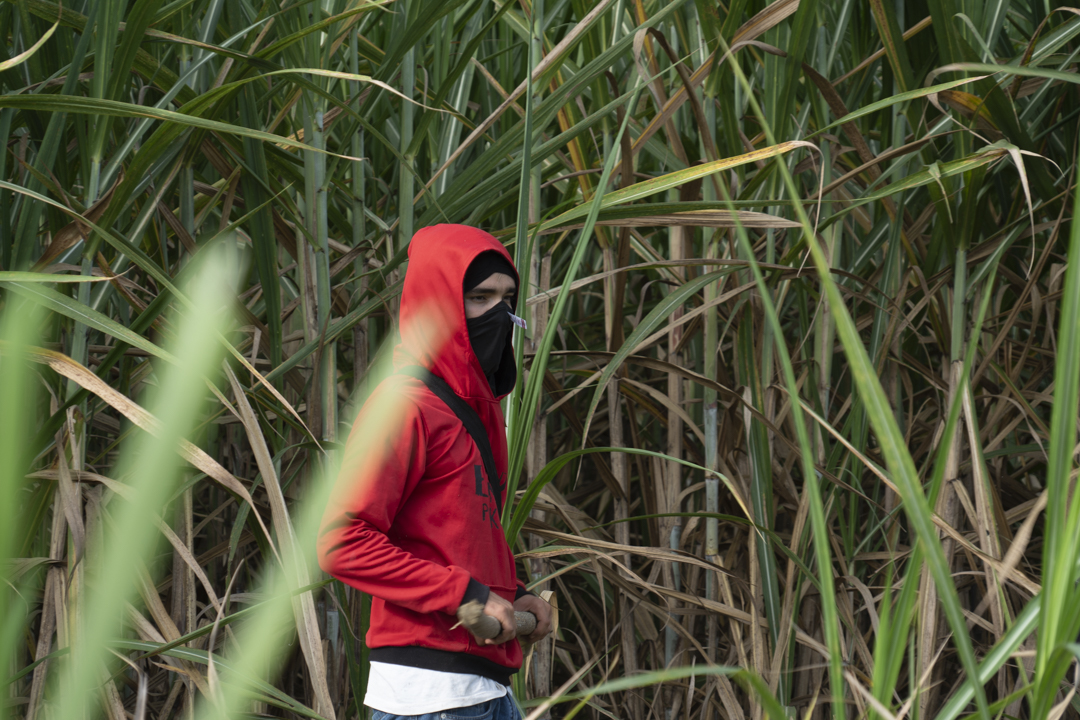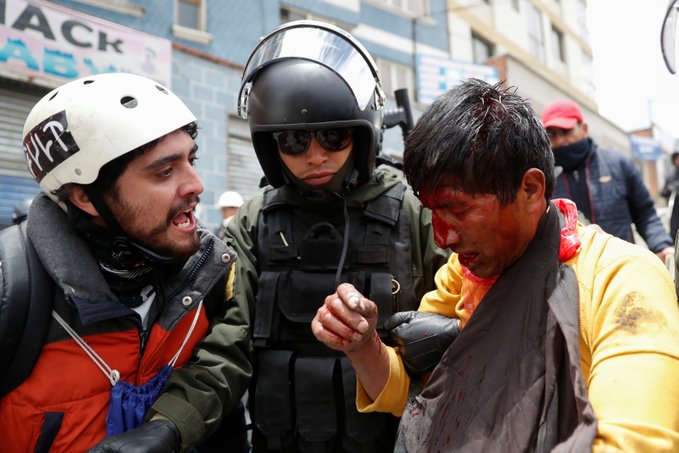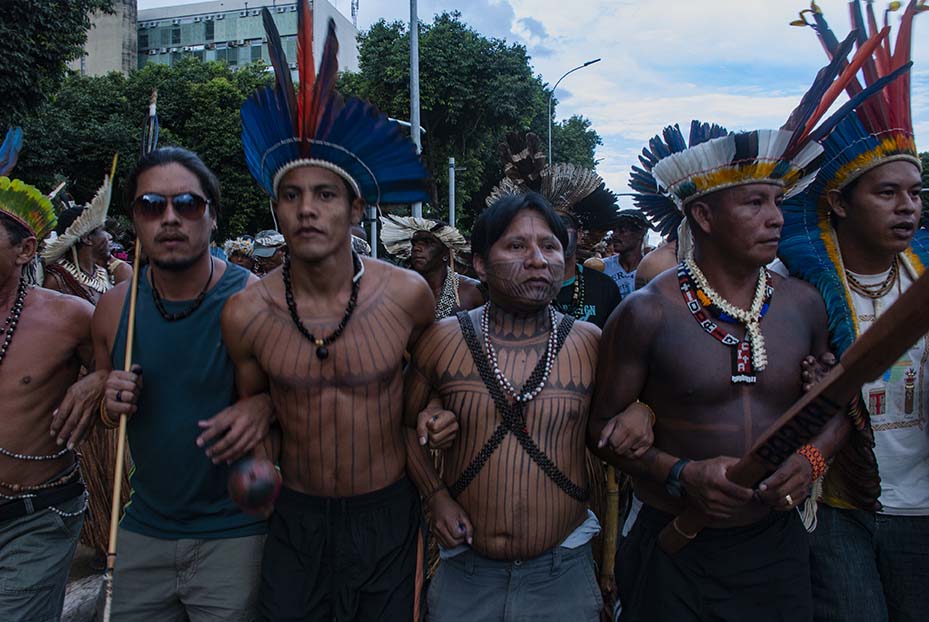Tío Bad rapping in Oaxaca. Photo: Daliri Oropeza
Translated by David Milan for Avispa Midia. Originally written in Spanish by Daliri Oropeza for Pie de Página.
Tío Bad, a rapper from the village of Sayula de Alemán, Veracruz, Mexico, fought for his people’s Mixe-Popoluca language. Through his art, he denounced the devastation wrought by fracking in the region, the narcostate in Veracruz, murders of journalists, and the displacement of his language. He was found on Tuesday, December 17, 2019, murdered.
Lengua enredada es mi dialecto,
janga yoshuatray Camnik
jemna nipatkajej townik
nikƗrysh dios nikakminga jujnik
nik jej tan agitkap mokuij.vamos a trabajar a la milpa
a encontrarnos en el camino
agradecerle a dios porque hubo lluvia
porque gracias a eso tenemos maíz.
Song: “Marap”
Written by: TíoBad
Colectivo Altepee ft. Sector 145Josué Bernardo Marcial Santos, Tío Bad, rapped in Sayulteca, a language that like all indigenous languages in Mexico has been subjugated, silenced, and displaced. He realized that only “the old folks” spoke it. Young people no longer did. He saw everything his community was losing with the displacement of their language.
Who has heard of Sayulteca, Mixe-Popoluca, Sayula Popoluca, or Tɨkmay? He made it resound on as many stages as he could
He brought back a style of jaranai playing particular to the people of Sayula de Alemán, where the grandparents were the only ones still singing verses. Tío Bad brought together a healthy group of kids and youth interested in learning and rebuilding the Popoluca culture of Sayula through the jarana.
His rap was a torchbearer for the revival of the Sayulteca or Mixe-Popoluca language. He himself began to speak it through talking with his grandmothers.
He would spend hours sitting in the patio full of trees and flowers, asking them about the words that would later make up his verses. He learned to speak the language that had been denied to him to remind listeners that his people exist.
Josué Marcial Santos, Tío Bad—nicknamed for the love he had for his three nieces—considered himself indigenous. He wore it tattooed on his skin.ii
He usually wore a baseball cap. His favorite, royal blue and emblazoned with the NY Yankees logo, was one he had bought on a jarana tour of the US. In the blazing sun of Sayula, it served him well. It also helped identify him among the different groups of young people there. He wore baggy pants and identified with rap and hip hop culture.
Tío Bad was dedicated to spreading Sayula’s traditional music, through a group that he and a few friends formed called Tzump tuuj (Raindrops, in Sayulteca).
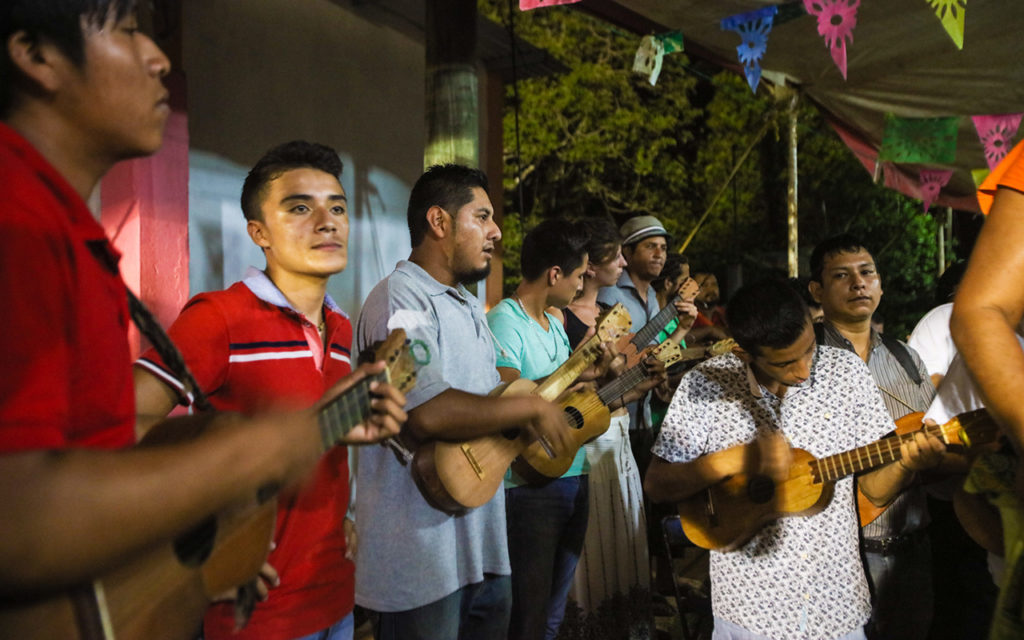
In the last few months, the municipal government had insisted that the group play at patronal celebrations. It had become a reference point for the rescue and popular teaching of the jarana, which is linked to the organizational traditions based in mayordomías of first peoples in the region.
“The fandangoiii is the pueblo’siv oldest form of organization, for giving thanks or asking for water, rain for the crops. From the person who slaughters the pig, to the one who puts up the tent, makes the tamales, arranges the chairs… All of this is the fandango, a pueblo’s form of organization. Something the pueblos have lost,” he said to an audience of young people participating in the National Indigenous Congress (CNI).
He was an active participant in the Altepee Collective, which is focused on traditional string music as a motivation for political, social, and community participation for young people. Collective members give and receive workshops on string music, instrument-making, audio, video, and rap, which has turned it into an option for youth in a violent area.
Tío Bad served as a delegate to the National Indigenous Congress for his pueblo. He had direct experience with organizational processes that made him conscious of the impositions and threats under which the Popoluca people have lived for hundreds of years.
Tío also knew and practiced the ancient technique of nixtamalization, the process that converts corn into masa flour. He would distribute more than 60 kilos (130 lbs) a day in his village. He rebelled against the migration statistics of youth in Sayula, choosing instead to work on what was intrinsic to his region. In the last few years, he focused more on the cultivation and processing of cacao. That’s what he lived off of.
The violence in Tío Bad’s village
Sayula is a village with serious tears in its social fabric, where aspirations toward city life are always in competition with marginalization. The latter is due to the concentration of economic activity in the nearby petroleum port of Coatzacoalcos. Sayula is divided in half by the trans-isthmus highway, where everything that travels between the ports of Salina Cruz and Coatzacoalcos must pass. In short, it’s been hit hard by drug trafficking. Territorial fighting among cartels has been on the increase since 2013. It would seem that young people in this region have two choices: migrate, or line up with organized crime.
Tío Bad’s village lies in the narrowest part of the country, in the part of the Veracruzan Isthmus that borders Oaxaca’s Isthmus of Tehuantepec.

The feeling of insecurity in this region is reinforced day in and day out. There’s a newspaper whose copies are sold street by street, advertised through a loudspeaker on a motorcycle. The man riding it wears a mask. He rides through every neighborhood, announcing murders, deaths, robberies. As if everything were happening close by, the region’s murders are shouted out, but they don’t say exactly where.
This was the context for Tío Bad’s own murder. First he was disappeared and his kidnappers demanded a ransom. Then, they killed him and abandoned his body on the highway.
Collectivities
The Altepee Collective allowed Tío Bad to get closer to his own indigenous identity. This empowered his art, string music, and the use of jaranas in traditional celebrations by the peoples of southern Veracruz, where he was sought after to perform in as many parties, gatherings, homages, and fandangos as he could. That’s how he got to know the entire isthmus region.
He enjoyed learning and teaching the tunes and verses of the music. He was a person who always lent a hand to whoever needed one.

Tío Bad began rapping in the public square in the center of Sayula. He was the youngest rapper there—most were older than 15 and he had just turned 12. They started a crew called Sector 145. That’s how he met the Altepee Collective, after a rap workshop given by Mare Advertencia Lírika, with whom he shared his creations and projects, in Acayucan, the closest city to Sayula. He traveled through Mexico and the United States with this collective, which is dedicated to the preservation of traditional string music from southern Veracruz. Tío Bad asserted that “Hip Hop has changed my life, and it saved me from crime.”
In his village, he was always stigmatized as the “stoner,” since he used marijuana to explore his creative side.
Through modes of narrating and sharing emancipation, with the simplicity of a beat that guides or challenges one's rhythm, Tío Bad’s rap became a nascent expression in public spaces and gatherings. That’s what the youth in his village, as well as among the mestizo elite, liked about it. Through the messages in his songs, Tío helped empower the recovery of indigenous pueblos—his own just as much as wherever he sang. He kept the demands of the EZLN (Zapatista National Liberation Army) and the CNI close at hand. He read the entirety of the San Andrés Accords and the Zapatista communiqués derived from them. In Tío Bad’s life, rap was first—making rhymes, making a crew—and then, giving voice to protest. Just like hip hop’s origins in the Bronx.
Walking through the winding streets of his village, he would always sing out loud.
“Through music, we try to hold these values, above all to unite people, so that from there we can defend the land, we can inform people. That is our work.”
—Tío Bad
Tío Bad had no choice but to experience firsthand the fear for the continued existence of indigenous peoples in Mexico. He was a participant in the discussion, and that’s why he presented himself as a Popoluca from Sayula. How to place value… how to make sure the language would not be forgotten, he wondered.
Tío wrote about topics relevant to communities around him, like fracking. This message got across well to young people—it was easily transmissible through rap, because the medium is interesting. The theme of the Sayulteca language was always present in these spaces.
“Over there in Veracruz, the violence is finishing us off, as are the megaprojects. We asked, ‘how do we confront this with music?’ That’s where rap comes in: it describes it just like it is, very directly. As the compañero said, what they’re doing with full dominion ownership destroys the ejido.v They buy people off to frack the land. 224 wells, and more are coming—it’s worrying because the people don’t know; the TV, the newspaper, the radio don’t talk about it, so we said, well, we gotta write a song about fracking so that people know what it is,” Tío Bad said in a CNI meeting in Chilpancingo.
This is the song he composed against fracking, for which he was censured and kicked out of the Sayula Technical Secondary School [Translator: lyrics left in Spanish to avoid doing injustice to Tío Bad’s rap]:
Fracking, palabra que va a conocer el pueblo
Fracking es abrir la tierra para acercarnos al infierno
y si no me equivoco un proyecto de gringos locos
y si no me equivoco un proyecto de gringos locos
que ya tienen al planeta tan caliente como un foco
No te lo dijeron, no te lo comentaron
quieren nuestro petróleo porque el suyo se lo acabaron,
consumen tanto, pues nunca se imaginaron
que se les iba a acabar, solo porque tienen el baro
2010, geofísica, tucu tu tu tum tum, se que escuchan explosiones
estaban empezando, eran exploraciones,
tres meses después y ¡que se vienen los temblores!
Pónganse a pensar, eso apenas es el comienzo
no somos mensos y nos pusimos a investigar y vimos que…
al pueblo nunca se le ha hecho un consenso y
en México esta práctica la están por licitar,
El Estado involucrado dispuestos a tratar
unas tierras a las cual no las habido el trabajo
para enamorar gran dinero te han de dar
pero no quieren tu terreno, quieren lo que hay debajo
debajo
hay oro negro, y lo quieren a costa de todo
no importa que nos vean revolcados en el lodo
o que todititos nuestros paisanos quedemos muertos
Fracking es fractura hidráulica y quieren fracturar la tierra
es por eso que con gráfica decidimos hacerles la guerra
gases que se fugan por las grietas nos contaminan el aire,
es por eso que con métrica explicamos lo que no te explica nadie
750 sustancias químicas contaminan el agua,
es por eso que con lírica defendemos lo que más hace falta
Fracking es fractura hidráulica y quieren fracturar la tierra
es por eso que mediante el Hip Hop venimos a ponerte alerta
Analizando nos preguntamos ¿Cómo carajo
van a perforar la tierra 3 mil metros para abajo?
11 mil pozos asignados a Veracruz,
esa cifra la hizo decir ¡Jesús!
Y es que por pozo, se necesitan dos hectáreas,
¿acaso todas esas tierras serán necesarias?
llevando la vida diaria, poquito a poquito
pues por pozo se ocuparán 29 millones de litros
de agua y de agua sufrimos un desbasto
los ríos se están secando, no creas que es un mito,
todos debajo se contaminarán los mantos friáticos
y por arriba se prenderá el agua que sale por tu grifo,
Compañero te soy sincero, la verdad no sé si me explico…
lo único seguro es que nuestro futuro está en manos de unos cuantos ricos…
pero todo eso cambia si nos informamos,
pero todo eso cambia si nos organizamos,
pero todo eso cambia si como pueblos nos juntamos.
i Translator: a traditional string instrument from Veracruz that looks like a small guitar.
ii Translator: Definitions, delimitations, and self-identifications around indigeneity can be considerably different in Mexico from how they are often conceived or discussed in Anglo America.
iii Translator: “In Veracruz, Mexico, a fandango is a party where people get together to dance, to play and to sing in a community setting.” (Wikipedia, https://en.wikipedia.org/wiki/Fandango).
iv Translator: Pueblo doesn’t have a very good English equivalent. It often means people just as much as it means village or place. In these cases, I have elected to leave it in Spanish.
v Translator: Ejidos are an important part of land use and ownership law in Mexico. They are a form of collective property that has been threatened in the last few decades by NAFTA, international mining interests, and other capitalist projects.



